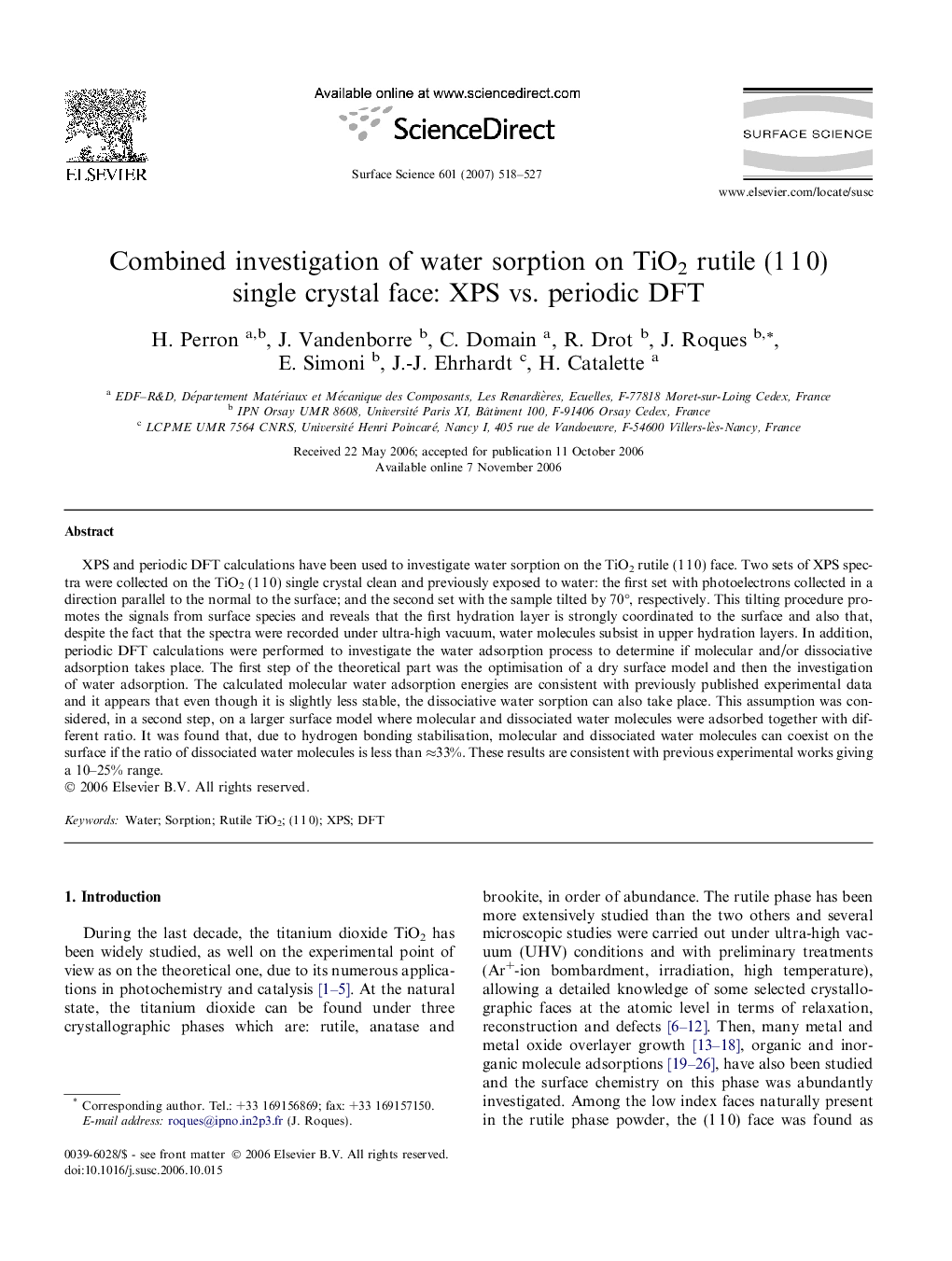| Article ID | Journal | Published Year | Pages | File Type |
|---|---|---|---|---|
| 5426162 | Surface Science | 2007 | 10 Pages |
XPS and periodic DFT calculations have been used to investigate water sorption on the TiO2 rutile (1 1 0) face. Two sets of XPS spectra were collected on the TiO2 (1 1 0) single crystal clean and previously exposed to water: the first set with photoelectrons collected in a direction parallel to the normal to the surface; and the second set with the sample tilted by 70°, respectively. This tilting procedure promotes the signals from surface species and reveals that the first hydration layer is strongly coordinated to the surface and also that, despite the fact that the spectra were recorded under ultra-high vacuum, water molecules subsist in upper hydration layers. In addition, periodic DFT calculations were performed to investigate the water adsorption process to determine if molecular and/or dissociative adsorption takes place. The first step of the theoretical part was the optimisation of a dry surface model and then the investigation of water adsorption. The calculated molecular water adsorption energies are consistent with previously published experimental data and it appears that even though it is slightly less stable, the dissociative water sorption can also take place. This assumption was considered, in a second step, on a larger surface model where molecular and dissociated water molecules were adsorbed together with different ratio. It was found that, due to hydrogen bonding stabilisation, molecular and dissociated water molecules can coexist on the surface if the ratio of dissociated water molecules is less than â33%. These results are consistent with previous experimental works giving a 10-25% range.
